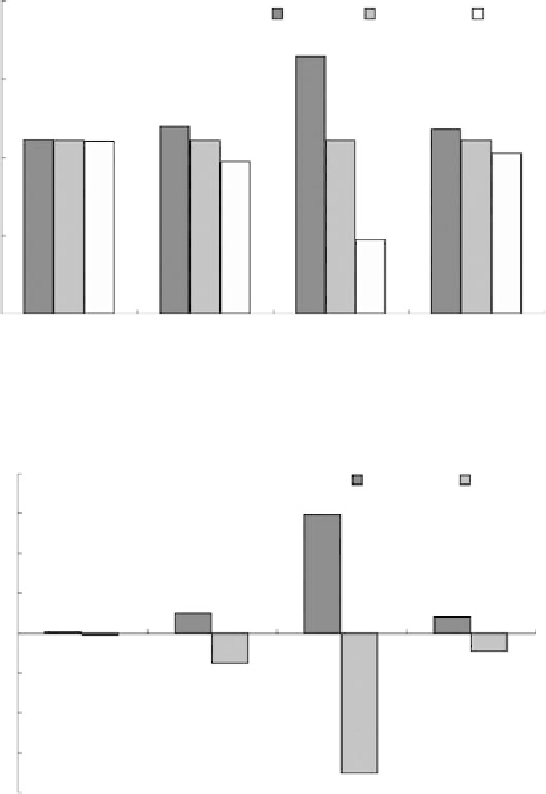Biomedical Engineering Reference
In-Depth Information
9
High
Normal
Low
8
7
6
5
Endplate
Vertebra
Disc
Ligament
FIgure 15.17
Comparing the effects of variations of the material properties of the main spinal component
groups on the resonant frequencies of the spine.
20
High
Low
15
10
5
0
Endplate
Disc
Ligament
-5
Vertebra
-10
-15
-20
FIgure 15.18
The relative percentage changes of resonant frequencies of the T12-Pelvis finite element
model for different spinal component groups due to the variation of material properties against the basic
model.
a greater role in determining the resonant frequency of the spine. It can be found that the first-order
vertical resonant frequency of the model decreases by 19.2% if the Young's moduli of all the spinal
components are decreased by 30%, based on the material properties of the basic model.
Of all the spinal components, the disc annulus contributed most prominently to the resonant
frequency of the human spine (Figures 15.17 and 15.18). Therefore, additional analyses were carried
out to understand how variations in the Young's modulus of the disc annulus influence the resonant
frequency of the human spine.
The resonant frequency and percentage changes in the frequency of the model due to the
variations (against the basic model) of the Young's modulus of the disc annulus were also analyzed
(Guo et al. 2009a). The resonant frequencies of the model varied from −29.0% to 15.5% of the intact
model, while the Young's modulus of the disc annulus varied from 0.84 MPa to 7.56 MPa. The
results also show that the resonant frequency of the human spine model will decrease remarkably
when the Young's modulus of the disc annulus is less than 2.0 MPa. In addition, the effect of varia-
tions in the Poisson's ratio of the nucleus pulpous on the resonant frequency was also analyzed. The

Search WWH ::

Custom Search